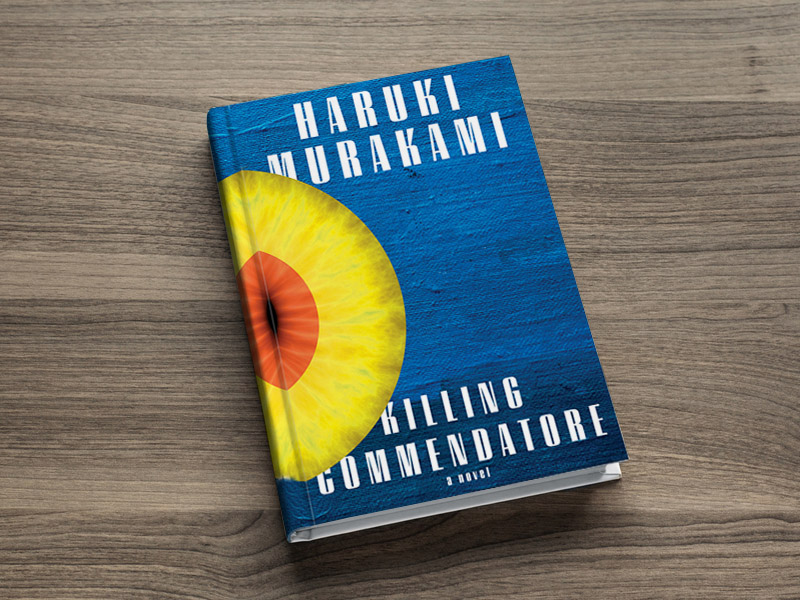The argument that an artist, be they musician, writer, or painter, should come under fire for sticking to an established formula is a dead horse that’s been well and truly beaten. The Ramones all died before they ever tried anything truly experimental, and yet Kazuo Ishiguro writes in a different style and genre for every book he releases. There is no right or wrong on this debate, and both sides can be venomous critics to say the least.
Murakami has certainly bedded down in the ‘if it ain’t broke’ camp and has shown himself to be very comfortable there. With his newest novel, Killing Commendatore he demonstrates all the trappings that make his work recognisably his; it pushes no boundaries and provides nothing ground-breaking. But what it delivers in spades is the finest storytelling, characterisation, dialogue, and pacing that we’ve seen from him in a decade.
The titular Killing Commendatore is a mysterious painting found in the attic of the famous painter, Tomohiko Amada. It is uncovered by our nameless protagonist, a painter himself who has become disenchanted with making his living by painting the portraits of wealthy businessmen. After his wife abruptly leaves him, he takes the chance to embrace a fresh start by vanishing into the wild mountains of Japan and hole himself up in the house of the once famous artist Amada to continue painting what he is truly passionate about.
Perhaps Murakami has a list taped to his fridge of all the elements which must be included in each novel, and as they get introduced he dutifully ticks them off.
Here on this bleak mountain is where we spend most of our story, as our narrator and protagonist is gradually introduced to an increasingly bizarre menagerie of characters, most vital of which is the enigmatic Menshiki, a man carved out of a mould which very much resembles America’s old sport, Jay Gatsby.
The relationship between Menshiki and our protagonist, also reminiscent of that between Fitzgerald’s Gatsby and Nick, is one which blossoms fantastically over time. Menshiki continues to be a mysterious, almost slippery, character until deep into the novel, but Murakami manages to delicately keep in place this veil draped over him while simultaneously warming us to him, and to the relationship which grows between him and our nameless artist.
It is very likely that this plot description has some alarm bells ringing in the heads of long-time Murakami fans. So much at play here is not new, and his tropes have become so synonymous with his very name that one has to wonder what his writing process is. Perhaps Murakami has a list taped to his fridge of all the elements which must be included in each novel, and as they get introduced he dutifully ticks them off.
That being said, everything served up by his newest novel is excellently presented. The dialogue, heavily laden with innuendo, philosophical argument, metaphor, and speculation, is sharper and cleaner than that of previous works; the setting is darker, wilder, more untameable than where Murakami has previously taken us; every twist and turn in the story is delivered with flourish and excitement.
Killing Commendatore is a Murakami novel in the truest sense, and it is very much his finest work in a long time. Taking every element and theme that has made him a global phenomenon and refining them to perfection before throwing it all into a gothic retelling of The Great Gatsby was a bold move in and of itself, and it pays off in spades.








